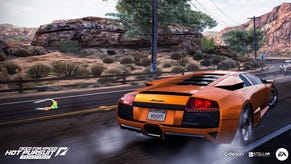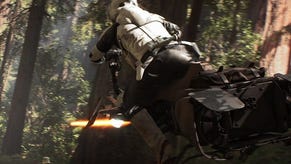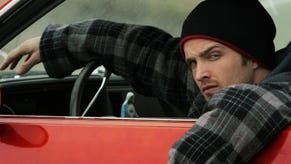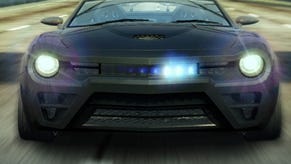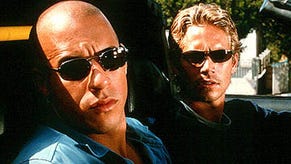Need for Speed: Hot Pursuit
Social network king.
The use of lighting is just one of the subtleties Criterion has introduced to a gameplay setup that was pretty widely documented at E3. There are full racer and cop career structures within the game and cop editions of every racer car, all with their own distinct liveries.
"I've been playing Need for Speed since 1994, pretty much when the series began and I've been playing as a racer for pretty much all of that time. In some of the Hot Pursuit games I could play as a cop. That was cool but it wasn't a fully fleshed-out experience," observes Sullivan.
"We asked to do Need for Speed and when we knew we'd get a shot at doing it, we thought that playing as a cop would be pretty cool so we did a bit of research and found out that in nine years pretty much the most requested feature was actually to play as a cop. This was kind of cool for us as we were going to do it anyway."
Equipment has been added to add to the mix, with racers gifted with tools to help evade the police including radar jammers, weapons jammer and "super nitrous", while cops get a range of roadblocks, spike-strips and chopper support that makes the player feel - as Sullivan puts it - like you're "rolling with the entire weight of the police behind you".
Another core mechanic in Hot Pursuit is the way in which the player is rewarded for doing just about anything in the game, whether you're playing online or offline. Sullivan likens it to the experience-point system that has gained popularity in console titles over the last couple of years.
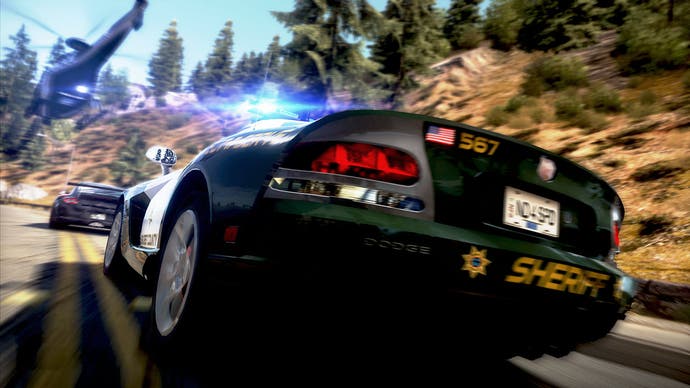
"Everything you do on or offline either as a racer or a cop give you bounty. Basically bounty is our version of XP. If you've played Modern Warfare 2, World of Warcraft or pretty much any game online, XP is what it's all about," he explains. "It's the same with bounty. You get it for pretty much everything you do. If I beat a friend's time online, I get bounty. If I beat an AI racer offline, I get bounty. Bounty fills up that bar, which unlocks new ranks, which opens up new cars and content."
Races and events are split into tiers, with a different range of cars initially available for each stage. Criterion's objective is to make sure that the player gets to experience a big range of the cars built into the game as opposed to previous Need for Speed titles on the HD consoles that only let you sample a relatively small amount of the available roster of vehicles.
"There are two different ways we look at the cars we give you. In the first race, I get to choose between a BMW and a Porsche. I don't start in a bloody Astra or a Citroen or anything - we have super-cool cars right from the start. The second event lets you drive the Zonda through the desert," Sullivan reveals as he shows off the game's initial "Sports" tier of races (other tiers are apparent, going all the way up to "Hyper", but apparently these names might change).
"We don't want to grind it out for three, five, seven, 10 hours to get to the cool stuff. We do preview events that give you the chance to drive cars you drive more later on, we get to the fun cars really quickly, we mix it up as much as possible. By the time you've played through the first part of the career, you've probably driven seven or eight very different cars in nine events. That's more than I'd drive if I'm playing a lot of other games for over 10 hours or so."
While rumours still persist that car manufacturers are very protective over how their vehicles are represented in-game, Sullivan maintains that it's a pleasure working with them and that they've been very supportive in letting Criterion go to town on their creations. "Since this is the first time we've used real cars we thought there might be a lot of red tape with the manufacturers and a lot of umming and ahhing about getting stuff signed off. In matter of fact, it's been really, really cool," he says.
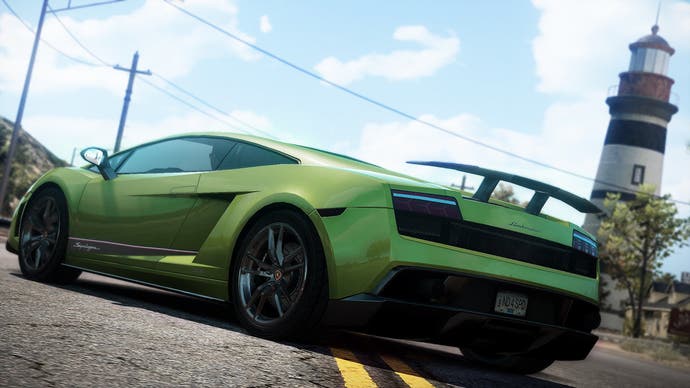
"Is it OK if we smash the cars up a bit? Is it cool to create cop versions of these cars? They're like, 'Yeah it's fine. As long as the car comes across as looking and feeling really good, do what you want.' So we're pushing it as far as we can in terms of what you do when you crash the car and what you can do when you bust each other, but also in terms of how the cars look."
Playing the new Hot Pursuit, it's all a far cry from the existing HD Need for Speed titles, most of which start off by making you drive the slightly hot variants of ecobox hatchbacks, forcing you to work through hours of gameplay in under-powered vehicles before the really decent vehicles are wheeled out.
The more mundane licensed cars are still there in this new Criterion re-imagining of the franchise, but you'll never get to drive them. Instead they are relegated to drone vehicles - traffic to avoid on the roads as you burn though the environments in a range of exotics up to and including the legendary McLaren F1 and the awesome Bugatti Veyron.
"Real cars, real traffic cars for the first time. Usually it's fake cars, fake traffic, nothing's real. In the older Need for Speed you'd have been driving those to begin with," Sullivan smiles. "One day we came into work and decided what cars were going to be in the game. How cool is that? We had a list of hundreds and hundreds of different cars from different manufacturers.
"We started off with the super-hot cars and just kept going hotter and hotter..."
Need for Speed: Hot Pursuit is due out on 19th November.

